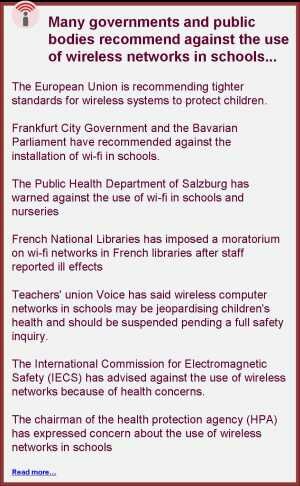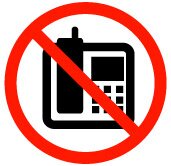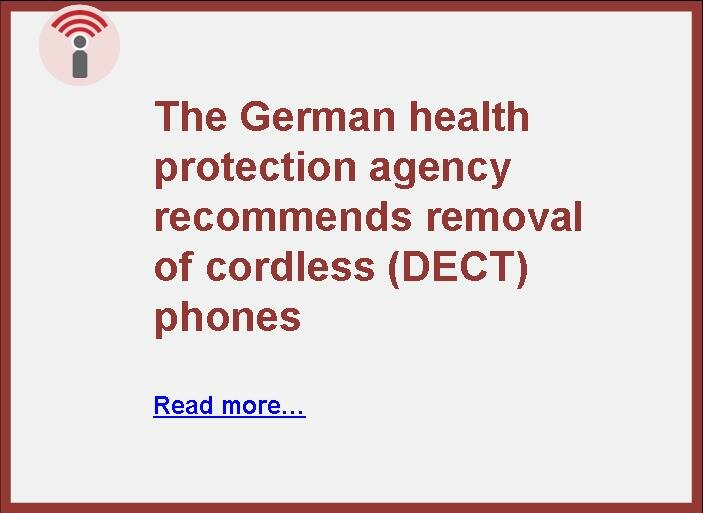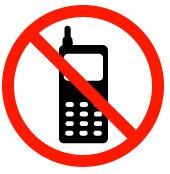|

Wi-fi in schools
|
|
Click here to download a fact sheet on wi-fi in schools
Click here to download simple steps to reduce exposures from wi-fi
|
|
A classroom fitted with wi-fi means that the children and staff are exposed to constant low-level microwave radiation. A small number of people are likely to suffer symptoms like headaches as a result.
Everyone is affected cumulatively by this exposure and current evidence suggests that children may be more likely to develop medical problems during childhood, as well as cancers and other serious illnesses later in life.
Low-level microwave radiation has also been linked to problems with cognitive skills, particularly memory, concentration and reaction time. Read more about the health effects...
Of particular significance for children are studies which indicate that children absorb more radiation in the brain than adults which may indicate a greater risk of brain tumours.
|
|
 When WiFi was put into my classroom I began to suffer headaches, When WiFi was put into my classroom I began to suffer headaches,
nausea, pains around the body and heart palpitations. These
disappeared each evening away from the wi-fi but returned the
following day when I was again exposed to it. After eight days it became so bad that the school head agreed to switch off the wi-fi in my area. My symptoms stopped immediately. 
Michael Bevington, teacher, Stowe School, Buckingham

A wired network must ... be used as the main network in an institution....Wireless networking can provide an additional layer of flexibility to enhance traditional wired networks, allowing access to the

network from previously inaccessible locations.
Becta advice
|
 When a number of wireless laptops are in use together they and the nodes can emit high levels of radiation, sometimes greater than close to a phone mast. Read about the radiation exposures from wi-fi in schools... When a number of wireless laptops are in use together they and the nodes can emit high levels of radiation, sometimes greater than close to a phone mast. Read about the radiation exposures from wi-fi in schools...
The school’s duty of care means that wi-fi is generally inappropriate in school, where pupils and teachers are unable to choose to avoid this radiation. A wired network should be used instead; this can be practically as easy and is usually faster and more secure. BECTA, the government's educational technology advisory agency highlights some technical problems with wireless networks, such as cost, security, speed and coverage. Read more...
The chair of the UK Health Protection Agency, Sir William Stewart, expressed concern about the use of wi-fi networks in schools in a BBC Panorama programme, saying the World Health Organisation guidelines needed to be reviewed. Watch the programme here... Read the transcript...
An HPA investigation into wi-fi in schools failed even to consider the health effects, only going as far as to take readings from wi-fi installations.

Cordless Phones in schools
Cordless (DECT) phones offer convenience but emit the same type of radiation as mobile phones and wifi. When the phone is in use on a call the person using it exposes the head to relatively high levels of radiation and those around are also exposed to this at a reduced level. Read more...
 When not in use the phone and base station emit radiation at all times, exposing children and staff to radiation. Read about the exposures from cordless phones... When not in use the phone and base station emit radiation at all times, exposing children and staff to radiation. Read about the exposures from cordless phones...
The alternative is to use wired phones or the low radiation cordless phone.
 Mobile Phones in schools Mobile Phones in schools
An individual mobile phone can give off relatively high levels of microwave radiation, especially if there is poor reception. To avoid passive radiation, current advice is that they should not be used within a metre of another person. Since this is difficult or impossible in most classrooms, mobiles should not be used in school buildings by pupils or teachers except in an emergency. Read more about the dangers of mobile phones...
Mobile phones can also create social problems for children, such as addiction to mobile phone use, bullying by text and inappropriate use of camera phones, as well as an increased risk of being mugged and of being involved in a road accident. Read more...
We recommend teachers, staff, parents and visitors be asked to keep their mobile phones turned off at all times within school, except maybe for short periods to listen to messages. Mobile phone calls should only be made when several metres away from children, and ideally outside the building. We also recommend mobile phone use by children be actively discouraged. Download a poster to support a mobile-free policy.
When children insist on using a mobile phone, there are simple steps they can take to minimise their radiation exposure. Read more...
Click here for a full summary of the health effects of microwave radiation in schools...
Find out about health implications of interactive whiteboards...
|